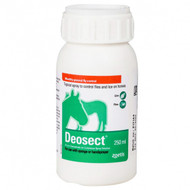Sweet Itch - The Facts
Posted by Ben Watson on 26th Feb 2016
SWEET-ITCH – THE FACTS
This condition is caused by an allergic reaction to saliva from the Culicoides midge. It results in intense itching so the horse will try to rub the affected area against stables or walls which may worsen the condition or cause wounds that can become infected.
Prevention
Midges are most active from dusk to dawn so avoid grazing at this time or give horses extra protection.
Protecting the horse with a blanket will stop the midges from biting.
A fly screen on the stable door will help to keep midges away from sensitive horses.
Midges do not like windy conditions so sheltered grazing away from water is best avoided.
There are a great many insect repellents on the market and the best one for any particular horse is usually found by “trial and error”
There is a supplement Fidavet Cavalesse containing Nicotinamide which is claimed to “balance the immune response” and increase the natural fats in the skin surface and reducing the histamine produced in response to bites.
It is best given some weeks before the “sweet-itch” season starts.
Insecticides and Acaricides
The traditional treatment for Sweet-Itch is Benzyl Benzoate Application sold under names such as EASIVET and KILLITCH used in accordance with the directions. SWITCH contains PERMETHRIN which has both insecticidal and repellent properties and has a longer duration of action but should be used cautiously after a “patch test” in fine-skinned animals such as Arabs. DEOSECT is another synthetic pyrethroid product in concentrated form which is economical if larger numbers of animals are kept.
Severe cases
Steroids such as PREDNISOLONE may be prescribed where there is severe irritation which Hyperdrug can dispense at competitive prices.
NB Steroids should be avoided in horses at risk of laminitis.

